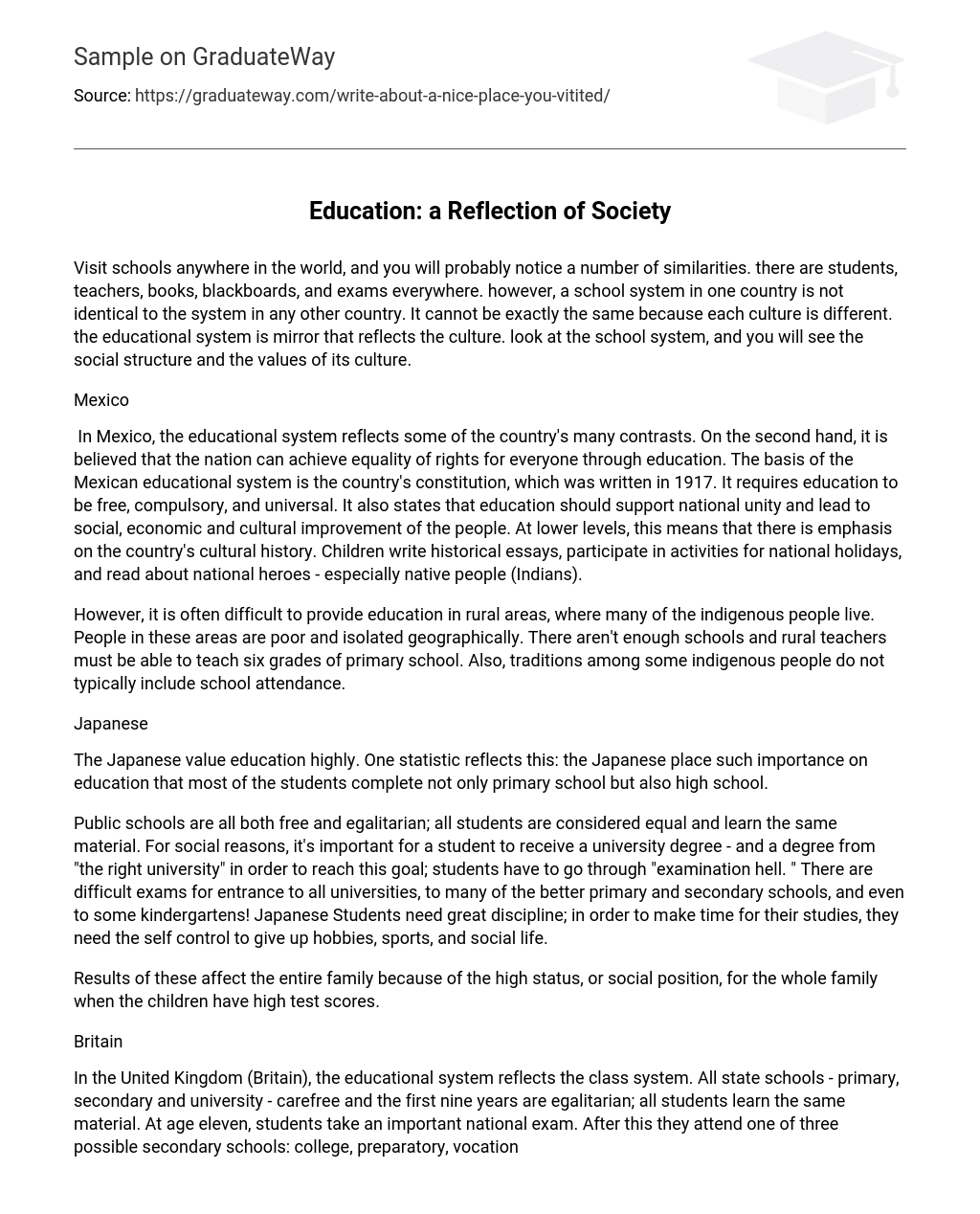Visit schools anywhere in the world, and you will probably notice a number of similarities. there are students, teachers, books, blackboards, and exams everywhere. however, a school system in one country is not identical to the system in any other country. It cannot be exactly the same because each culture is different. the educational system is mirror that reflects the culture. look at the school system, and you will see the social structure and the values of its culture.
Mexico
In Mexico, the educational system reflects some of the country’s many contrasts. On the second hand, it is believed that the nation can achieve equality of rights for everyone through education. The basis of the Mexican educational system is the country’s constitution, which was written in 1917. It requires education to be free, compulsory, and universal. It also states that education should support national unity and lead to social, economic and cultural improvement of the people. At lower levels, this means that there is emphasis on the country’s cultural history. Children write historical essays, participate in activities for national holidays, and read about national heroes – especially native people (Indians).
However, it is often difficult to provide education in rural areas, where many of the indigenous people live. People in these areas are poor and isolated geographically. There aren’t enough schools and rural teachers must be able to teach six grades of primary school. Also, traditions among some indigenous people do not typically include school attendance.
Japanese
The Japanese value education highly. One statistic reflects this: the Japanese place such importance on education that most of the students complete not only primary school but also high school.
Public schools are all both free and egalitarian; all students are considered equal and learn the same material. For social reasons, it’s important for a student to receive a university degree – and a degree from “the right university” in order to reach this goal; students have to go through “examination hell. ” There are difficult exams for entrance to all universities, to many of the better primary and secondary schools, and even to some kindergartens! Japanese Students need great discipline; in order to make time for their studies, they need the self control to give up hobbies, sports, and social life.
Results of these affect the entire family because of the high status, or social position, for the whole family when the children have high test scores.
Britain
In the United Kingdom (Britain), the educational system reflects the class system. All state schools – primary, secondary and university – carefree and the first nine years are egalitarian; all students learn the same material. At age eleven, students take an important national exam. After this they attend one of three possible secondary schools: college, preparatory, vocational (for job training), or comprehensive (with both groups of students).
However, a small number of students attend expensive private schools. These are students from upper-class families. Half of the students at Oxford and Cambridge universities come from such schools. It might seem that anyone can afford to go to a university because all universities are free, but only 1 percent of the lower class goes to university. Because graduates from good universities get the best jobs, it is clear that success is largely a result of one’s social class.
The United States
Education in United States is available to everyone, but not all schools are equal. Public primary and secondary schools are free for everyone; there is no tuition. The majority of the Americans are all high school graduates. Students themselves decide if they want college-preparatory or vocational classes in high school; no national exam determines this. Higher education is not free, but it is available to almost anyone and more than half of all high school graduates attend college or university. Older people have the opportunity to attend college, too, because Americans believe that “you’re never too old to learn. “
On the other hand, there are also problems in U. S. chools. In many secondary schools, there are problems with lack of discipline and with drugs and crime. In addition, public schools receive their money from local taxes, so school in poor areas receive less money. As a result, they don’t have enough good teachers or laboratory equipment, and the buildings are often not in good condition. Clearly, U. S. education reflects both the best and the worst of the society.
Conclusion
It is clear that each educational system is a reflection of the larger culture – both positive and negative aspects of economy, values and social structure. Look at a country’s school and you will learn about the society in which they exist.





